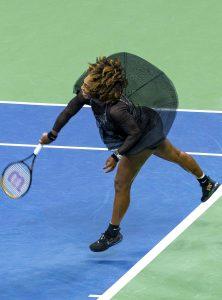We may earn money or products from the companies mentioned in this post.
Introduction

Tennis is a game of precision, power, and finesse To excel on the court, every aspect of your equipment must be in top shape, including your tennis racket One often overlooked but crucial maintenance task is restringing your racket regularly This article will delve into the importance of restringing a tennis racket and the factors that influence how frequently it should be done
Importance of Restringing a Tennis Racket
1
Maintain Optimal Performance:
Just like any other piece of sports equipment, tennis strings wear out over time and lose their elasticity and tension As a result, you may notice a significant drop in performance as your shots become less powerful and accurate By restringing your racket, you can restore its optimal performance by providing it with fresh strings that offer better control and power
2
Prevent Injury from Using Worn-Out Strings:
A worn-out string can pose a risk to your overall safety on the court When strings lose tension, they become more prone to breaking during play Broken strings can whip back at high velocity and potentially cause injuries such as cuts or eye damage to both players or bystanders Regularly restringing your racket ensures that you have reliable strings that won’t unexpectedly snap during intense gameplay
Factors that Influence the Frequency of Restringing
1
Level of Play and Frequency of Use:
The frequency at which you need to restring your tennis racket depends on how often you play and at what level Professional players who compete frequently may need to restring their rackets every few matches or even after each tournament to maintain consistent performance levels On the other hand, recreational players who play casually may only need to restring their rackets once or twice a year
2
Type and Quality of Strings:
Different types of strings have varying levels of durability and resilience Natural gut strings, for example, provide excellent feel and power but tend to wear out faster compared to synthetic strings Additionally, higher quality strings generally last longer before needing replacement Considering the type and quality of strings you use can help determine how often you should restring your racket
In conclusion, restringing your tennis racket is an essential part of maintaining its performance and ensuring your safety on the court By understanding the importance of restringing and considering factors like level of play, frequency of use, and string type and quality, you can develop a restringing schedule that keeps your racket in optimal condition for peak performance So don’t forget to give your tennis racket some love by giving it fresh strings regularly!
Signs it’s time to restring your tennis racket

As a tennis player, you know that the performance of your racket is crucial to your game Over time, however, the strings on your racket can lose their tension, affecting both power and control This is one of the key signs that it’s time to restring your tennis racket
Tension loss and its impact on power and control
When the tension in your racket’s strings decreases, you may notice a significant drop in power and control during your shots The ball won’t have the same snap off the strings, resulting in less pace and accuracy This can be frustrating for any player who relies on their racket to deliver consistent performance
Monitoring tension levels over time
A great way to determine if it’s time to restring your tennis racket is by monitoring the tension levels regularly Using a racquet diagnostic machine or a tension tester tool, you can measure the current string tension and compare it to the original tension when you first strung your racket If there is a noticeable difference, it’s a clear indication that a restringing is needed
String wear and fraying
An obvious sign that it’s time for a restringing is when you observe wear and tear on your strings Inspect them for notching, fraying, or discoloration at the intersections where they cross each other Additionally, pay close attention to any signs of wear in the sweet spot of your strings—the area most frequently used for hitting shots
The impact of different playing styles on string wear
Your playing style can also affect how quickly your strings wear out For spin-heavy players who generate heavy topspin or slice shots, the friction between the strings and the ball can cause them to wear down more rapidly Similarly, flat hitters who consistently strike the ball with powerful, direct shots may also experience faster string wear
By being aware of these signs and taking proactive measures to restring your tennis racket when necessary, you can ensure that your game remains at its best Restringing will not only restore power and control but also give you the confidence to take on formidable opponents on the court
Types of Strings and Their Lifespan

When it comes to choosing the right tennis strings, there are several options available, each with its own unique characteristics Understanding the lifespan of different string types can help you make an informed decision about which one is best suited for your playing style and needs
Polyester Strings
Polyester strings have gained popularity among players looking for durability, spin potential, and control on the court These strings are known for their ability to maintain tension over time, providing consistent performance during long matches Additionally, polyester strings offer excellent spin generation, allowing you to add extra bite to your shots
However, one downside of polyester strings is their relatively poor tension maintenance compared to other types Over time, these strings tend to lose tension faster than their counterparts Additionally, some players may experience discomfort or arm issues due to the stiffer nature of polyester strings
Multifilament Strings
If comfort and feel are your top priorities when it comes to tennis strings, then multifilament strings might be the perfect choice for you Composed of hundreds of tiny fibers bundled together, these strings provide exceptional cushioning and shock absorption on impact
Multifilament strings also offer a good balance between power and control They provide enough power to generate strong shots while still maintaining a level of precision in your game However, it’s important to note that multifilament strings may not last as long as other types due to their softer composition
Natural Gut Strings
Natural gut strings are considered the cream of the crop when it comes to tennis string materials Made from cow or sheep intestines, these premium-grade strings offer unparalleled comfort and feel on every shot
One of the key advantages of natural gut strings is their exceptional tension maintenance They are known to hold tension well, allowing you to maintain consistent performance over an extended period These strings also offer a unique combination of power and control, making them a popular choice among professional players
However, natural gut strings do have some drawbacks They are sensitive to moisture and weather conditions, which means they may lose their playability in humid or wet environments Additionally, natural gut strings tend to come with a higher price tag compared to other string types
In conclusion, understanding the pros and cons of different tennis string types can help you choose the right one that suits your playing style and preferences Whether you prioritize durability, comfort, or feel on the court, there’s a string out there that can enhance your game and keep you swinging with confidence
Guidelines for determining when to restring your tennis racket

When it comes to maintaining your tennis racket, one of the key considerations is knowing when to restring it A general rule-of-thumb formula is based on the number of hours you play per week By following this formula, you can ensure that your racket’s strings remain in optimal condition for better performance and durability
Rule-of-thumb formula based on hours played per week
If you’re a regular player and hit the court four times a week, a good guideline is to restring your racket every four months (4 x 4 = 16). This frequency allows you to maintain consistent tension and responsiveness in your strings On the other hand, if you play once a week, consider restringing your racket once per year (1 x 12 = 12) to keep it in top shape
Adapting guidelines to personal preferences and playing style
While the rule-of-thumb formula provides a helpful starting point, it’s important to adapt these guidelines based on your personal preferences and playing style Aggressive players who generate more power and spin may find that their strings lose tension faster than others In such cases, they might need to restring more frequently, perhaps every three months or even sooner
Similarly, if you experience arm discomfort during play or have specific comfort requirements, consider adjusting your restringing schedule accordingly Restringing sooner can help optimize comfort levels by ensuring that the strings provide adequate cushioning and shock absorption
Professional advice and services
To make informed decisions about when to restring your racket, don’t hesitate to seek professional advice from local tennis shops or experienced stringers They can assess factors such as string condition, tension loss, and your playing style to provide personalized recommendations Their expertise can help you fine-tune your restringing schedule for optimal performance on the court
In addition to seeking professional advice, it’s essential to regularly check your strings for signs of wear This can include fraying, loss of tension, or visible notches By inspecting your strings after each game or practice session, you can catch any issues early on and take appropriate action
Remember that maintaining well-strung tennis racket strings is crucial for consistent playability and performance By following these guidelines and adapting them to your specific needs, you can keep your racket in top condition and enhance your enjoyment on the tennis court
Useful Links

How often should you restring your tennis racket?
How often to restring your tennis racket – my take – YouTube
WHEN IS IT TIME TO CHANGE YOUR TENNIS STRINGS
How often should you restring your tennis racquet?
Do Tennis Strings Go Bad? Know When You Need Fresh …
Why You Should Restring Your Tennis Racquet
How often do y’all restring? – Talk Tennis
When is it time for a new tennis racquet
When do I need to restring my tennis racket?
Do Tennis Strings Have A Shelf Life?
How often do pros restring a tennis racket?
When should I get my tennis racquet restrung?
Tennis Racquet Stringing + Home Pickup
Mastering Tennis Racquet Stringing
How to String a Tennis Racquet: 13 Steps (with Pictures)
How to String a Tennis Racket
How Often Should You Restring Your Tennis Racket?
How Much Does It Cost To String A Tennis Racquet?
When Should You Restring Your Tennis Racket?
How Often Should You Restring A Tennis Racquet?






